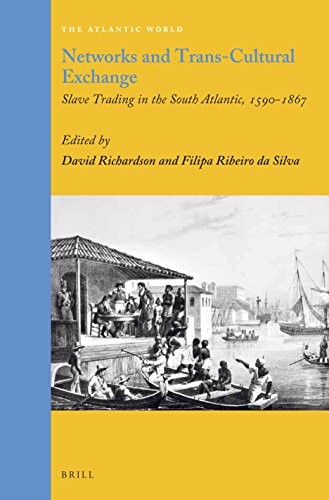Cultural encounters have been defining characteristics of the modern world. They involve the mixing of ideas, institutions and people across cultural boundaries and have produced a variety of humanly destructive as well as pos- itive or beneficial outcomes historically. At the heart of these processes has been a millennium-long re-mixing through various forms of migration of peo- ples of different cultural backgrounds, a process which the European-led ‘Age of Discoveries’ and the associated colonization of the Americas by Portugal, Spain and other Western European powers accelerated dramatically. In tan- dem with colonization by Europeans there occurred a widespread collapse of the American indigenous populations through exposure to diseases to which they had no natural immunity. Faced with one on-going catastrophe, European colonial powers keen to maximum returns from the rich land and other resources of their new-established colonies sowed, according to some histori- ans, the seeds of another by seeking to overcome insufficiency of local American supplies of manageable labour by recruiting new workers from over- seas. Some came from Europe, often under some form of indenture, but the vast majority came from Africa as European ships carried across the Atlantic a rising tide of chattel slaves from the continent to work in mines and commer- cial agricultural activities run by Europeans. Overall, at least 12.5 million enslaved Africans boarded ship bound for the Americas in 1500–1867; some 10.7 million survived the Atlantic crossing.1 It was the largest ocean-borne forced migration in human history, outstripping threefold or more the migra- tion of all Europeans to the Americas before 1820.
چکیده فارسی
برخوردهای فرهنگی مشخصه های دنیای مدرن بوده است. آنها شامل اختلاط ایدهها، نهادها و افراد در سراسر مرزهای فرهنگی هستند و از نظر تاریخی پیامدهای مخرب انسانی و همچنین مثبت یا مفیدی را به وجود آوردهاند. در قلب این فرآیندها، اختلاط مجدد هزارهای از طریق اشکال مختلف مهاجرت مردم با پیشینههای فرهنگی مختلف، فرآیندی که «عصر اکتشافات» به رهبری اروپا و استعمار قاره آمریکا توسط پرتغال همراه بود، بوده است. ، اسپانیا و دیگر قدرت های اروپای غربی به طرز چشمگیری سرعت گرفتند. همزمان با استعمار اروپاییها، فروپاشی گسترده جمعیتهای بومی آمریکا از طریق قرار گرفتن در معرض بیماریهایی که در برابر آنها مصونیت طبیعی نداشتند، رخ داد. به گفته برخی مورخان، در مواجهه با یک فاجعه در حال انجام، قدرت های استعماری اروپایی که مشتاق کسب حداکثر بازده از سرزمین غنی و سایر منابع مستعمرات تازه تأسیس خود بودند، با تلاش برای غلبه بر کمبود منابع محلی آمریکا، بذر دیگری را کاشتند. نیروی کار قابل مدیریت با استخدام کارگران جدید از خارج از کشور. برخی از آنها از اروپا می آمدند، اغلب تحت نوعی قرارداد، اما اکثریت قریب به اتفاق از آفریقا آمده بودند، زیرا کشتی های اروپایی موج فزاینده ای از بردگان را از این قاره برای کار در معادن و فعالیت های کشاورزی تجاری که توسط اروپایی ها اداره می شد، از اقیانوس اطلس عبور می دادند. به طور کلی، حداقل 12.5 میلیون آفریقایی برده شده در سال های 1500-1867 سوار کشتی عازم قاره آمریکا شدند. حدود 10.7 میلیون نفر از گذرگاه اقیانوس اطلس جان سالم به در بردند.1 این بزرگترین مهاجرت اجباری اقیانوسی در تاریخ بشر بود که سه برابر یا بیشتر از مهاجرت تمام اروپایی ها به قاره آمریکا قبل از سال 1820 پیشی گرفت.
ادامه ...
بستن ...
Author(s): David Richardson, Filipa Ribeiro Da Silva
Series: Atlantic World
Publisher: Brill, Year: 2014
ISBN: 900428057X,9789004280571
ادامه ...
بستن ...










